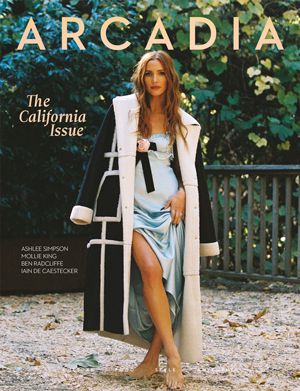Facial sculptors have gained popularity as innovative tools for skincare enthusiasts seeking to enhance their self-care routines. These devices promise to contour and rejuvenate facial features, but using them incorrectly can lead to disappointing results or even skin irritation.
The most common mistake when using an innovative led face sculptor is applying excessive pressure, which can damage delicate skin tissues and cause bruising. To avoid this, start with gentle strokes and gradually increase pressure as you become more comfortable with the tool. Proper technique involves using upward and outward motions, following the natural contours of your face.
Cleanliness is crucial when using facial sculpting tools. Failing to sanitize the device before each use can introduce bacteria to your skin, potentially leading to breakouts or infections. Additionally, overuse of facial sculptors can strain facial muscles and potentially cause soreness. It’s essential to follow the manufacturer’s recommendations for frequency and duration of use to achieve optimal results without compromising skin health.
Key Takeaways
- Use gentle pressure and proper technique to avoid skin damage
- Clean facial sculpting tools before each use to prevent bacterial transfer
- Follow recommended usage frequency to prevent muscle strain and maximize benefits
Understanding Facial Sculpting Tools
Facial sculpting tools offer various benefits for skincare enthusiasts. These devices aim to enhance facial contours, promote circulation, and improve product absorption when used correctly.
Types of Facial Sculptors
Jade rollers are popular for their cooling properties and ability to reduce puffiness. These smooth stones glide over the skin, promoting lymphatic drainage and relaxation.
Gua sha tools, often made of rose quartz or jade, feature various edges for targeting different facial areas. They help improve circulation and define facial contours when used with proper technique.
Microcurrent devices deliver low-level electrical currents to stimulate facial muscles. These tools can help tone and tighten the skin over time with consistent use.
Dermaplaning tools, typically used by estheticians, gently remove dead skin cells and fine facial hair. This exfoliation process can leave the skin smoother and more receptive to skincare products.
The Importance of Skin Type Assessment
Understanding your skin type is crucial when selecting and using facial sculptors. Oily skin may benefit from tools that help decongest pores and control excess sebum.
Sensitive skin requires gentler approaches, often favouring cooler tools like jade rollers to soothe and calm the complexion.
Dry skin types may find gua sha tools particularly beneficial when paired with hydrating serums containing ingredients like hyaluronic acid.
Combination skin might need a mix of techniques, focusing on different areas with appropriate tools and pressure.
Role of Facial Sculptors in Skincare Regimen
Incorporating facial sculptors into a skincare routine can enhance product absorption. Using these tools after applying serums or moisturizers may help push products deeper into the skin.
Facial sculptors can also provide a relaxing massage experience, promoting blood flow and potentially reducing tension in facial muscles.
For optimal results, it’s essential to use facial sculptors in conjunction with a broad-spectrum SPF during daytime routines to protect the skin from UV damage.
Consistency is key when using these tools. Regular use, typically 2-3 times per week, can lead to noticeable improvements in skin texture and tone over time.
Common Mistakes and Best Practices
Using a facial sculptor can yield impressive results when done correctly. Proper technique, tool selection, and integration with skincare routines are essential for maximizing benefits while avoiding potential pitfalls.
Avoiding Overuse and Misapplication
Overuse of facial sculptors can lead to skin irritation and inflammation. Limit sessions to 2-3 times per week, allowing skin time to recover between treatments. Apply gentle pressure, moving the tool in upward and outward motions to support natural facial contours.
Avoid using facial sculptors on active breakouts or inflamed areas, as this may exacerbate skin issues. For acne-prone skin, focus on unaffected areas and consult a dermatologist before incorporating the tool into your routine.
Always start with clean skin to prevent pushing makeup, dead skin cells, or bacteria into pores. Use a mild cleanser beforehand to remove impurities and reduce the risk of clogged pores and breakouts.
Incorporating Facial Massage Techniques
Combine facial sculptor use with proper massage techniques to enhance results. Start with light strokes to warm up the skin, then gradually increase pressure. Focus on areas prone to tension, such as the jawline and forehead.
Incorporate lymphatic drainage movements to reduce puffiness and promote circulation. Use gentle, sweeping motions from the centre of the face outwards and downwards towards the lymph nodes.
For optimal sculpting, pay attention to facial muscle groups. Work against gravity to lift and define cheekbones, jawline, and brow areas. Short, upward strokes can help tighten and tone the skin over time.
Selection and Maintenance of Tools
Choose a facial sculptor that suits your skin type and concerns. Smooth jade or rose quartz tools work well for sensitive skin, while metal options may offer better conductivity for product absorption.
Clean your facial sculptor after each use with mild soap and warm water. Dry thoroughly to prevent bacterial growth. For deeper cleaning, use rubbing alcohol once a week to sanitize the tool.
Store facial sculptors in a clean, dry place to maintain hygiene. Consider keeping them in the refrigerator for a cooling effect that can help reduce puffiness and soothe the skin during use.
Enhancing the Efficacy of Skincare Products
Apply a facial oil or serum before using the sculptor to create slip and prevent tugging on the skin. This also aids in product absorption, potentially boosting the effectiveness of active ingredients.
Look for products with ingredients like hyaluronic acid or peptides to complement the sculpting action. These can help improve skin hydration and promote collagen production for firmer, more youthful-looking skin.
Use a conductivity gel with metal facial sculptors to enhance their effectiveness. This can improve the tool’s ability to deliver skincare ingredients deeper into the skin and may amplify its toning effects.
Consider incorporating targeted treatments for specific concerns. For hyperpigmentation, pair your facial sculptor routine with brightening serums containing vitamin C or niacinamide for more comprehensive results.
Conclusion
Proper technique is essential when using a facial sculptor. Gentle upward motions, consistent cleaning of the device, and following manufacturer instructions help maximize benefits. Using the tool 3-5 times weekly for 5-10 minutes per session can yield noticeable results over 4-6 weeks.
With regular, careful use, a facial sculptor can enhance one’s skincare routine. However, moderation is key to avoid potential irritation. Maintaining realistic expectations and combining the tool with a holistic skincare approach will lead to the best outcomes for skin health and appearance.







